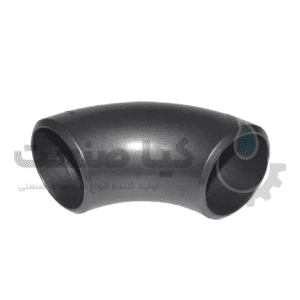Kneeling
Showing the single result
Kneeling
A pipe elbow is a type of joint used to join two pipes at a specific angle, usually 90 degrees or 45 degrees.
Because of its curved shape, it is called an elbow, which allows the change of direction in the flow of fluid or gas through the pipes.
Elbow pipe fittings are usually made of metal or PVC materials and can be threaded or welded for a secure, leak-proof connection. They are commonly used in plumbing, HVAC systems, and industrial applications.
Types of pipe elbows
There are different types of pipe elbows, including:
1/ knee 90 degrees:
These elbows have a 90 degree bend and are usually used to change the flow direction in the pipe.
2/ knee 45 degrees:
These elbows have a 45 degree bend and are used to change the flow direction at a less severe angle.
3/ Knee with a long radius:
These elbows have a long radius compared to the diameter of the pipe, which helps to reduce friction and pressure drop in the pipe system.
4/ Knee with short radius:
These elbows have a shorter radius than the diameter of the pipe, which makes them more compact and suitable for tight spaces.
5/Threaded knee:
These elbows have threaded ends that easily attach to pipes or threaded fittings.
6/socket welding knee:
The elbow joint has a socket end for easy and reliable socket welding connection.
7/buttock knee joint:
These elbows are designed for butt welding, which involves welding the elbow directly to the pipe or fitting.
8/flanged knee:
These elbows have flanged ends that attach to pipes or flanged fittings, creating a secure, leak-free connection.
9/welded knee:
They are made by welding two pieces of pipe to each other at a desired angle.
10/seamless knee:
These elbows ensure a smooth internal surface and improved flow characteristics.
These are some of the most common types of pipe elbows, each with their own advantages depending on the application.
Application of pipe elbow
Pipe elbows are commonly used in plumbing and construction projects for various applications. Some of the main applications of pipe elbows are:
Changing the direction of the fluid flow: The pipe elbow is used to change the direction of the fluid flow in the piping system.
They are especially useful when pipes need to be turned at different angles such as 45° or 90°.
Connection of different pipe sections: Pipe elbow is used to connect different parts of pipes to each other, especially when there is a need to change the direction of the pipe. Elbows can be threaded or welded onto the pipes to make a secure connection.
Fluid pressure reduction: Pipe elbows can be used to reduce fluid pressure in the piping system.
By changing the direction of fluid flow, they can help reduce pressure drop and maintain constant fluid flow.
Diversion of flow to different locations: Elbow fittings with multiple openings can be used to divert fluid flow to different locations in a piping system.
It is especially useful in complex piping systems or HVAC installations.
Space limitation: In tight spaces or areas where there is limited space for direct pipe runs, pipe elbows can be used to move around obstacles or fit pipes in limited areas.
Summary
In general, pipe elbows are vital components in various industries and applications that provide flexibility and versatility in the design and installation of piping systems.

